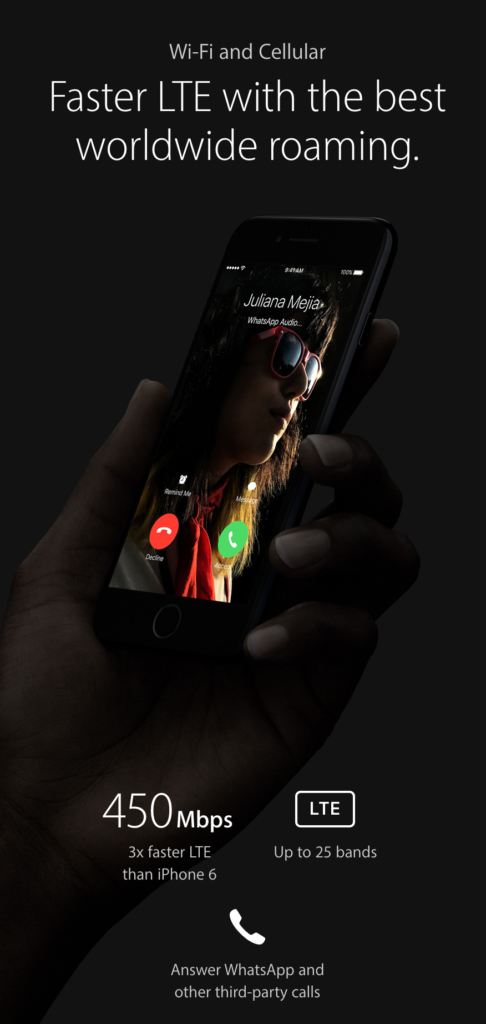
Apple launched the new iPhone 7 yesterday - showing off major new features like water resistance, stereo speakers, and some extremely impressive new camera capabilities.
For mobile internet fans - the big news on the cellular front is yet another leap in theoretical peak speed - with the addition of 3x cellular carrier aggregation.
Apple describes it this way:
"iPhone 7 features LTE Advanced, with speeds up to 450 Mbps for data downloads — over 50 percent faster than iPhone 6s and three times faster than iPhone 6. And thanks to even more LTE bands, you’ll have the best worldwide roaming available in a smartphone. Happy travels."
A lot of RVers have gravitated to the iPhone because it has traditionally been one of the most flexible phone models available - and last year's iPhone 6S worked equally well swapping SIM cards between Verizon, AT&T, T-Mobile, and Sprint.
The iPhone 7 however is no longer quite as universal of a device.
Under the hood there are also some disappointments lurking, and some important cellular technology issues to be aware of before ordering - because not every iPhone 7 model is created equally!
Table of Contents
Model Differences: A1778 & A1784 Limitations
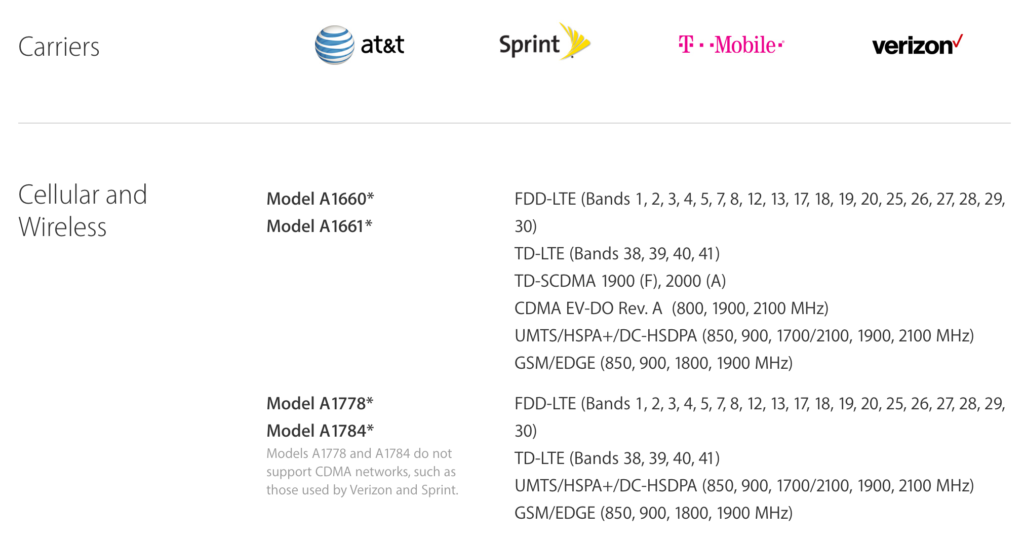
The iPhone 7 comes in two different versions in the US.
Model A1660 (iPhone 7) and A1661 (iPhone 7 Plus) will be sold by Verizon, Sprint, US Cellular, and by Apple as the "universal" version.
This model WILL work on every carrier in the US, and almost everywhere around the world.
Model A1778 (iPhone 7) and A1784 (iPhone 7 Plus) will be sold by AT&T and T-Mobile, and this model is different in one key way: it lacks a CDMA radio, meaning that it will not be fully usable on Verizon or Sprint!
Apple mentions this critical difference deep in the iPhone 7 sales FAQ:
iPhone offers the same innovative features regardless of the wireless carrier you choose. If you choose AT&T or T-Mobile as your wireless carrier, your iPhone will use 3G cellular technology for voice services and either 3G or 4G LTE cellular technology for data services. iPhone can roam internationally on many GSM carriers around the world. If you buy iPhone with AT&T or T-Mobile, it will not work on Sprint or Verizon Wireless.
If you choose Sprint or Verizon Wireless as your wireless carrier, your iPhone will use CDMA cellular technology for voice and data services. If you buy an unlocked iPhone with Verizon or Sprint, it will work on AT&T or T-Mobile. An iPhone activated on Sprint or Verizon Wireless also has the ability to roam internationally on GSM networks. For details on LTE network support, please see www.apple.com/iphone/LTE.
In other words - to maximize your future flexibility and compatibility, do not buy an iPhone 7 from AT&T or T-Mobile!
What About 4x4 MIMO and 256-QAM?
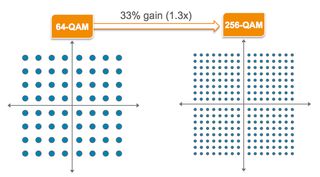
T-Mobile this week announced the rollout of two major new LTE Advanced technologies: 4x4 MIMO and 256-QAM.
Is the new iPhone 7 compatible with these latest advancements?
Neither Apple or T-Mobile has confirmed - but some deep digging seems to indicate that the AT&T and T-Mobile versions of the iPhone 7 will be using the Intel XMN 7360 LTE Modem, which does NOT support 256-QAM, 4x4 MIMO, or CDMA.
The "universal" iPhone 7 being sold by Verizon and Sprint however seems likely to be using the Qualcomm Snapdragon X12, which does support 256-QAM, 64-QAM upload speeds, and 4x4 MIMO.
Overall - the Snapdragon X12 is a much more capable LTE chip than Intel's offering.
Even though the chipset supports it - Apple probably did not design the iPhone 7 with four cellular antennas for 4x4 MIMO, but we'll only know for sure once the first teardowns are conducted.
UPDATE: Indeed, the iPhone 7 does not have quad antennas. The Samsung Galaxy S7 remains the only phone on the market with 4x4 MIMO support.
As for 256-QAM, that could potentially be someday enabled in software.
This might lead to T-Mobile selling an iPhone 7 model that actually runs slower on its own network than you'd get putting a T-Mobile SIM into a Verizon iPhone.
Regardless - the smart path forward is to avoid the Intel-powered A1778 & A1784, just in case these future capabilities ever end up being unlocked.
iPhone 7 pre-orders start tomorrow, and the first phones will ship a week later on September 16th.
We'll update this article if we learn any more about the underlying cellular capabilities and differences once the first benchmarks and teardowns are conducted.
UPDATE (10/23/2016): Avoid 'Intel Inside'
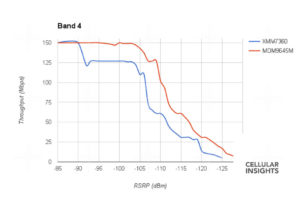
Testing firm Cellular Insights has published some detailed analysis comparing the Qualcomm and Intel powered versions of the iPhone 7 in laboratory conditions - and it turns out that there are even more reasons to avoid the Intel modem found in the iPhone 7 being sold by AT&T and T-Mobile.
Not only does the Intel modem lack CDMA capability that limits your future ability to switch to Verizon or Sprint - it also performs substantially worse in weak signal areas!
Cellular Insights looked at comparative performance on LTE Band 12 and LTE Band 4, and had this to say in conclusion:
"Band 4 is the most commonly deployed LTE spectrum band in North America... Mid and high spectrum bands are used to densify LTE networks and provide incremental capacity. Just like during our Band 12 tests, the iPhone 7 Plus with the Intel modem continues to struggle even at relatively higher RSRP values with unexplainable sharp dips in performance. The gap between the two variants is consistent and north of 30% again in favor of the Qualcomm variant. ... In all tests, the iPhone 7 Plus with the Qualcomm modem had a significant performance edge over the iPhone 7 Plus with the Intel modem."
In other words - if you want the best possible iPhone 7 cellular performance, make sure that you avoid the A1778 and A1774 models being sold by AT&T and T-Mobile. Even if you intend to use the iPhone only on AT&T or T-Mobile, you will still be measurably better off in weak signal areas by getting the "unlocked" universal version directly from an Apple store in the USA.
TIP: Beware of iPhone's purchased overseas. All European and Canadian models of the iPhone 7 use the Intel chip, but Qualcomm powers the Chinese and Japanese versions.
MIA Members: We hosted a live Q&A on September 13th discussing the future of LTE, and explaining what all these new LTE Advanced technologies are all about.
This topical video session is archived here.
Bonus Member Only Content Available!
We go extra for our premium members - who make this resource center possible (did you notice the lack of 3rd Party advertising?). We have included some additional information in this news article just for our members - analysis, guidance and/or insider tips.
If you're not yet a member, please consider joining us. Extra content like this is one of the many perks we offer - in-depth content, guidance, discounts, alerts, classroom and more.
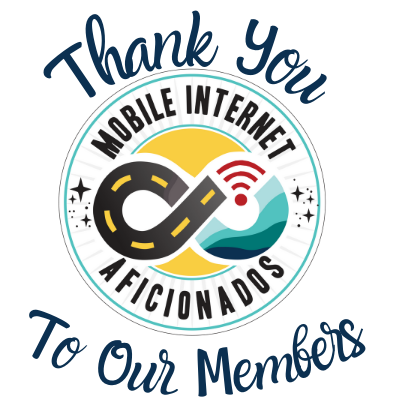
If you are already a member, please log in above to see the special content we have prepared for you.

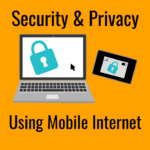
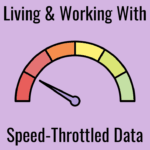
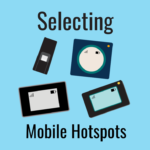

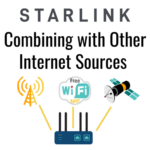

 Mobile Internet Resource Center (dba Two Steps Beyond LLC) is founded by Chris & Cherie of
Mobile Internet Resource Center (dba Two Steps Beyond LLC) is founded by Chris & Cherie of